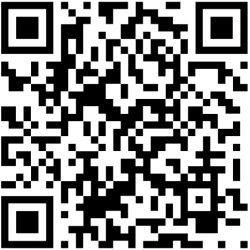No AI Generated Content
Introduction
Get Free Samples Written by our Top-Notch Subject Expert Writers known for providing the Best Assignment writing service in Australia
Question 1:
(a)f(x) = sin^3x(1-cosx)
The task is to get linear approximation at x= 0
Linear approximation formula is = L(x) ≈ f (x0) +f′(x0) (x−x0).
At the given point function value is 0 (Cai et al. 2019).First derivative format is,
f′(x) = (−3 (cos?(x)−1)cos?(x)+sin2?(x))sin2?(x)
At x=0, the value of first derivative is 0
So the approximation exists and the value of approximation is 0
(b)Second stage differentiation is = 6 cos^2x sin x - 6 cos^3x sin x +10 sin^3 x cos x -3 sin^3 xSecond stage differentiation is = 6 cos^2x sin x - 6 cos^3x sin x +10 sin^3 x cos x -3 sin^3 x
The value of this at x=0 is 0
So the second derivative exists for this function and the value of the second derivative is 0.
(c)Inverse function is = sin^3(1/x) ((1-cos (1/x))) this does not exist at x=0 as there 1/0 format can be found in this section..
Question 2:f(a+v)= f(a)+ Df(a)v +(½)v.Bv +o(?v?)^2
Here the main task is to make the two continuous differentiation of this function. Here two matrices are involved.

L(x) = Bx = b11 b12 · · · b1k b21 b22 · · · b2k . . . . . . . . . . . . bm1 bm2 · · · bmk x1 x2 . . . xk
x = x1 x2 . . . xk ∈ IRk .
The two matrices are B1 and B2.
Question 3:
(a)Let function f: R2→ R be given by,
F (x1, x2) = x1x2/(x12+x22) not equal to (0,0) and 0 at the value of (0,0)
The function is not continuous at (0,0) (Cui and Hong, 2020). If x2 is considered as mx1 then f (x1, mx1) → m/(1+m2) for x → 0
On the other hand, if x2 is x12, then f (x1,x12) → 0 for x → 0
So, as the value of function is changing with the value of x2, this function is not continuous at (0,0)
(b)Partial derivative is done based on x1 and x2.
= ((x12 +). x2 - x1x2(2x1))/()
At (0,0) , = 0 and = 0
= ((x12 +). x1- x1x2(2x2))/()
At (0,0) , = 0 and = 0
So partial derivatives of this function exist at (0,0) (Grigoryeva and Ortega, 2019). For x2= mx1 and for x2= x1 the value of both the derivatives are 0
As this function value is same for 0+ and 0- , so these partial derivatives are continuous at (0,0)
(c)For checking differentiability, limit h, k
(f(0+h,0+k)- f(0,0) - hfx1 (0,0) - k fx2 (0,0))/ √(h^2+k^2)
= f (h,k)/ √(h^2+k^2)
= hk / (h^2+k^2)√(h^2+k^2)
For k=h, value of this above function does not exist as this is a 1/0 format
On the other hand, for k =mh. Above function does not exist because it is a 1/0 format
So this function f (x1,x1) is not differentiable at (0,0)
Question 4:
(a)g(x)= 6x1^2 + 5x1x2/√2+ 7x2^2- 5x1x3/√2+2x2x3+7x3^2
Here three variables are present. These are x1, x2 and x3 (Kim et al. 2020). Normal to the surface is = (12x1, 14x2, 14x3)
Let the position of point E is (a, b, c)
The plane equation is , 12(x1-a)+ 14(x2-b)+14(x3-c) = 0
(b)Maximum point is (a,b,c) if the value of f (0,0,0) is greater than equals f (x1,x2,x3).
(c)Minimum point is (a,b,c) if the value of f (0,0,0) is lower than equals f (x1,x2,x3).
g’(x1) = 12x1+5 x 2/√2 +5x3
g’(x2)= 5 x 1/√2+ 14x2+ 2x3
g’(x3) = 5x1/√2+ 2x2+ 14x3
Question 5:
d((a1,a2),l)= min x ∈ l√((a1-x1)^2+(a2-x2)^2)
d=(x−1)^2+(y−2)^2+(z+1)^2
Question 6:
(a)
g(x) = {0,1,2,3}
f (x) = {-2, -3, -4, -5, -6}
(b)
f (x1,x2) = x1-2x2-3
After putting the values of f(x), four equations are found. These are:
x1= 2x2, x1-2z2=-2, x1-2x2=1 and -x1+2x2=1.
All the lines are plotted on the graph. The diagram is shown below.
Derivative with respect to x1 = 1
Derivative with respect to x2 = -2
So the critical point is (1,-2) for this function.
In this point the value of the function is = 2
(d)
This critical point is situated on the point (1,-2). This is situated in the fourth quadrant.
Reference list
Journals
Cai, A., Chavaudret, C., You, J. and Zhou, Q., 2019. Sharp Hölder continuity of the Lyapunov exponent of finitely differentiable quasi-periodic cocycles.Mathematische Zeitschrift,291(3), pp.931-958.
Cui, J. and Hong, J., 2020. Absolute continuity and numerical approximation of stochastic Cahn–Hilliard equation with unbounded noise diffusion.Journal of Differential Equations,269(11), pp.10143-10180.
Grigoryeva, L. and Ortega, J.P., 2019. Differentiable reservoir computing.J. Mach. Learn. Res.,20(179), pp.1-62.
Kim, W., Kanezaki, A. and Tanaka, M., 2020. Unsupervised learning of image segmentation based on differentiable feature clustering.IEEE Transactions on Image Processing,29, pp.8055-8068.


